Asset tagging is the process of assigning unique identifiers, such as barcodes, QR codes, or RFID tags, to physical assets for tracking and management purposes. It helps organizations efficiently monitor equipment, reduce loss, and streamline inventory management.
Asset tagging is essential for businesses and organizations to keep track of valuable assets, including IT equipment, office furniture, industrial machinery, and vehicles. By implementing asset tags, companies can manage their inventory, prevent theft, and enhance maintenance schedules.
Asset tagging is commonly used in industries such as healthcare, manufacturing, education, and logistics to ensure that assets are accurately tracked, maintained, and utilized efficiently.
By assigning unique identification numbers to assets, organizations can monitor their location, status, and usage. This reduces the risk of misplacement or theft.
Asset tags make it easier to conduct audits and stock checks, ensuring that all equipment is accounted for and properly maintained.
Tagging assets helps schedule maintenance, track repair history, and prevent unexpected failures, extending the lifespan of equipment.
By reducing asset loss and improving tracking accuracy, businesses can save money on replacement costs and operational inefficiencies.
Certain industries require strict asset tracking for compliance with financial, safety, and legal regulations. Asset tagging helps meet these requirements.
Printed barcodes are scanned using handheld devices or mobile apps to track assets. They are cost-effective and widely used.
QR codes allow users to access asset details quickly by scanning with a smartphone or tablet. These codes store more information than traditional barcodes.
Radio Frequency Identification (RFID) tags use wireless communication for asset tracking, making them ideal for large-scale asset management.
For high-value or mobile assets, GPS-enabled tags provide real-time location tracking.
Durable asset tags made of metal or plastic are used in harsh environments where standard labels may wear out.
Determine which assets require tagging based on their value, mobility, and tracking importance.
Select the appropriate tag based on asset type, environment, and tracking needs.
Each asset should have a unique ID linked to a central database for easy retrieval of information.
Use asset management software to store and track asset information, including location, maintenance history, and ownership details.
Ensure employees understand how to scan, update, and maintain asset records properly.
Conduct periodic audits to verify asset locations and update the database to reflect changes.
Hospitals and clinics use asset tagging to track medical equipment, ensuring that essential devices are available when needed.
Factories tag machinery and tools to optimize equipment usage and maintenance schedules.
Schools and universities track computers, projectors, and lab equipment to prevent loss and manage resources efficiently.
Asset tags help track shipments, pallets, and inventory in large storage facilities.
Companies use asset tagging for laptops, printers, and other IT hardware to manage resources effectively.
Asset tagging is the process of labeling physical assets with unique identifiers, such as barcodes, QR codes, or RFID tags, to track and manage them efficiently. It helps businesses monitor asset location, maintenance, and usage.
Asset tagging is essential for inventory control, reducing asset loss, improving maintenance tracking, and ensuring regulatory compliance. It enhances operational efficiency and cost savings by keeping accurate asset records.
Common asset tag types include barcode labels, QR code tags, RFID tags, GPS tracking tags, and durable metal or plastic tags. The choice depends on the asset type and tracking requirements.
Businesses implement asset tagging by identifying assets, selecting appropriate tags, assigning unique identifiers, using asset tracking software, training employees, and conducting regular audits to update records.
Industries that benefit from asset tagging include healthcare (medical equipment tracking), manufacturing (machinery maintenance), education (IT asset management), logistics (warehouse inventory tracking), and office management (IT hardware tracking).
Click the Copy to Clipboard button and paste into your web page to automatically add this blog content to your website
Content Copyright(c) 2024, ITU Online, LLC. Permission is granted to embed but not copy content in this blog. ITU Online, LLC reserves the right to modify or remove this content at any time.
Lorem ipsum dolor sit amet, consectetur adipiscing elit. Ut elit tellus, luctus nec ullamcorper mattis, pulvinar dapibus leo.
$49.99 Original price was: $49.99.$16.99Current price is: $16.99. / month with a 10-day free trial
Click the Copy to Clipboard button and paste into your web page to automatically add this blog content to your website
Content Copyright(c) 2024, ITU Online, LLC. Permission is granted to embed but not copy content in this blog. ITU Online, LLC reserves the right to modify or remove this content at any time.
ENDING THIS WEEKEND: Train for LIFE at our lowest price. Buy once and never have to pay for IT Training Again.

Get ready for the updated 220-1201 & 220-1202 exams with our brand-new CompTIA A+ training—designed to help you pass with confidence and start your IT career strong. Access this course and over 2,900 hours of expert-led IT training when you sign up for any of our All-Access Passes. Don’t miss out—enroll now and start learning today!